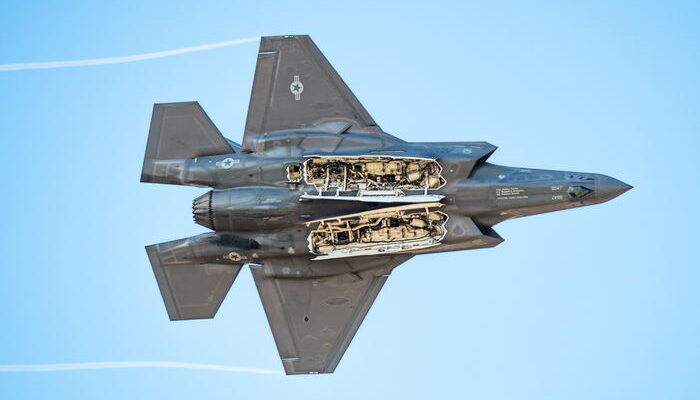In the ever-evolving landscape of global geopolitics and defense strategies, fighter jets have emerged as a symbol of national prowess. Their creation was driven by a need—a need to secure the skies, assert dominance, and protect national interests from potential adversaries. This aerial advantage has, over the years, become paramount in projecting power and establishing air superiority.
During World War I, as nations clashed on the ground, it became apparent that controlling the skies would be a game-changer. Reconnaissance flights, initially deemed harmless, soon became strategic tools for gathering intelligence. It didn’t take long before these aircrafts were armed, turning them into lethal machines that could strike from above. The age of fighter aircraft had begun.
The purpose of these jets wasn’t just to ensure territorial integrity but also to deter potential aggressors. They served as both shield and sword. In times of peace, they’d be a silent protector, ensuring the skies above remained free of threats. In times of conflict, they’d spring into action, thwarting enemy plans and ensuring mission success.
10 – Eurofighter Typhoon: Europe’s Crown Jewel
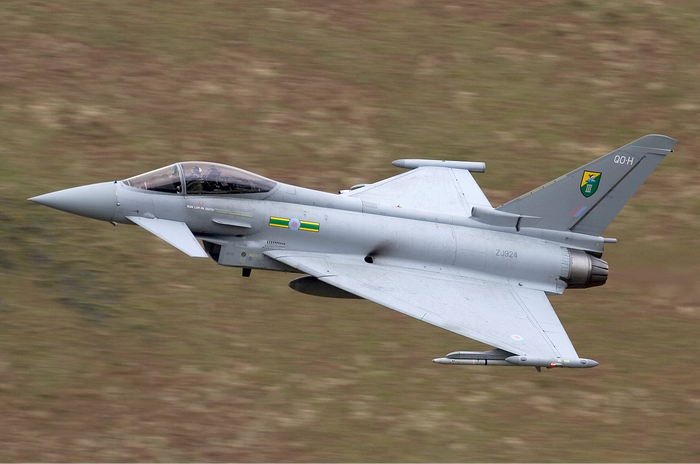
In the realm of multirole combat aircraft, the Eurofighter Typhoon stands out as a symbol of European defense collaboration. Designed and manufactured by a consortium of European companies, including the likes of Airbus, BAE Systems, and Leonardo, this aircraft is a testament to shared military and technological objectives.
The Typhoon’s development began during the Cold War, with the aim of producing an agile air superiority fighter to counter potential threats. However, its role expanded over time, evolving into a versatile aircraft capable of air-to-air, air-to-ground, and even electronic warfare missions. With an impressive top speed of over Mach 2 and a state-of-the-art delta wing design, the Typhoon boasts outstanding agility and maneuverability.
Another remarkable feature is its CAPTOR radar system. Not only can it track multiple targets in air-to-air and air-to-ground configurations, but its electronic scanning capability also makes it harder for adversaries to detect. The Eurofighter Typhoon has proven its worth in various NATO missions, reinforcing its status as a vital asset in European air defense.
09 – Shenyang FC-31: China’s Stealth Ambition
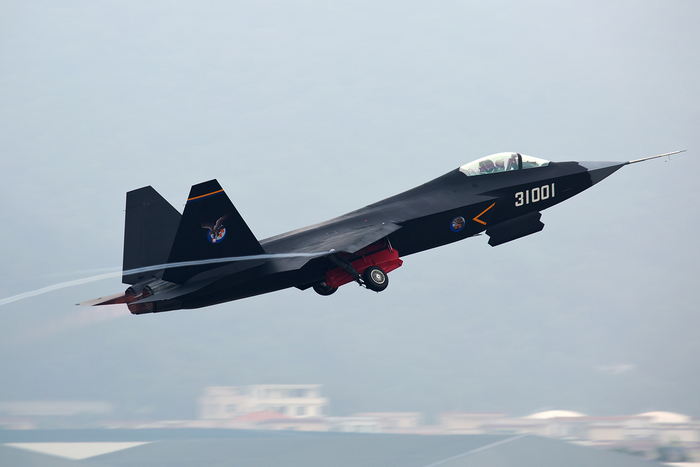
The Shenyang FC-31, often dubbed the “Gyrfalcon,” is China’s foray into the world of stealthy fifth-generation fighters. Developed by Shenyang Aircraft Corporation, this twin-engine, multi-role jet is seen by many defense experts as a clear signal of China’s ambitions to match Western aerial capabilities.
In its design, the FC-31 incorporates stealth features such as angular lines and internal weapons bays, aiming to reduce its radar cross-section. Its resemblance to other advanced fighter jets, especially the F-35, has sparked numerous discussions regarding technology imitations. Regardless, the jet exhibits China’s growing prowess in indigenous military aviation technology.
Powered by two RD-93 engines, the FC-31 has a top speed of around Mach 1.8. While it might not yet match the capabilities of its Western counterparts fully, its development showcases China’s dedication to narrowing the technological gap in the fighter aircraft arena.
08 – Sukhoi Su-57: Russia’s Answer to the Future
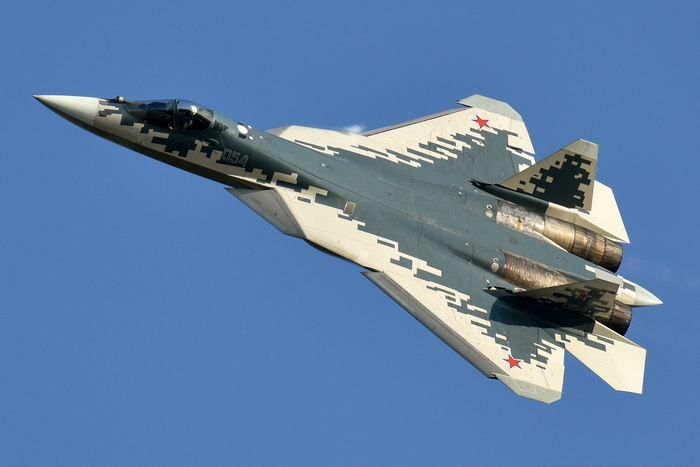
Stepping into the spotlight of fifth-generation fighters, the Sukhoi Su-57, known formerly as the T-50, represents Russia’s vision for the future of aerial warfare. Developed by Sukhoi, a subsidiary of Russia’s United Aircraft Corporation, this jet embodies Russia’s commitment to retain its status as an advanced fighter jet superpower.
Stealth, agility, and advanced avionics define the Su-57. Its airframe incorporates a blend of metal and composite materials, designed specifically to decrease its radar signature. The aircraft also possesses supercruise capability, enabling it to fly at supersonic speeds without using afterburners, enhancing fuel efficiency and reducing infrared signature.
One of the Su-57’s standout features is its radar system, distributed across its body, offering a 360-degree field of vision. This advanced system can reportedly track and engage a large number of targets simultaneously, both in the air and on the ground. Given its capabilities, the Sukhoi Su-57 is not just Russia’s response to Western fifth-generation fighters but also a clear statement of its technological prowess and future intentions.
07 – The F-16 Fighting Falcon: An Unyielding Legacy
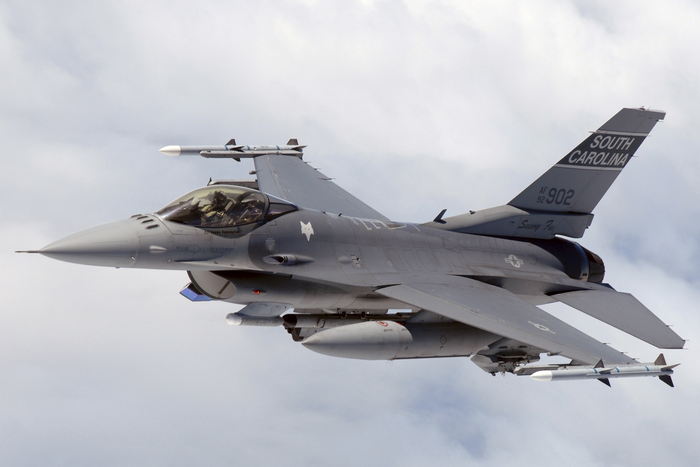
For decades, the F-16 Fighting Falcon has been an iconic representation of American air superiority. Manufactured by Lockheed Martin, this jet isn’t just a fighter; it’s a symbol of the U.S. Air Force’s commitment to air dominance. Boasting a reputation as the best dogfighting jet for many air forces worldwide, the F-16 has been involved in countless air-to-air engagements, proving its mettle time and time again.
Designed as a lightweight fighter, it didn’t take long for the F-16 to evolve into a multirole jet, excelling in a variety of tasks from precision strikes to reconnaissance. Its versatility is further demonstrated by its adoption by over 25 countries, making it one of the most widely used fighter jets globally. Many experts hail the F-16 as the World’s best fighter jet when it comes to a balance of capability, affordability, and proven combat experience.
06 – Chengdu J-20 Mighty Dragon: China’s Stealth Titan
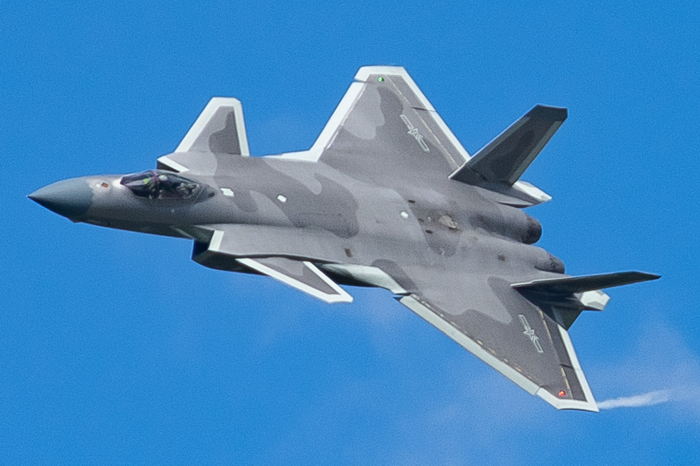
Emerging from China’s aspiration to craft a stealth aircraft that can rival the best in the world, the Chengdu J-20 Mighty Dragon certainly doesn’t disappoint. Developed by the Chengdu Aerospace Corporation, this jet is China’s first fifth-generation fighter with attributes designed to challenge any adversary in modern air warfare.
The J-20 boasts a unique design, blending stealth characteristics with raw power and agility. Its large frame is complemented by a combination of canards and delta wings, allowing for impressive high-speed maneuvers. Furthermore, its internal weapons bay and advanced avionics contribute to its designation as an advanced fighter jet, designed for air superiority roles and deep penetration strikes.
As China continues its assertive stance in various global regions, the J-20 stands out as a formidable representation of its expanding military capabilities. It’s undeniably a contender for the title of best jet fighter from an Eastern perspective.
05 – KAI KF-21 Boramae: South Korea’s Rising Star
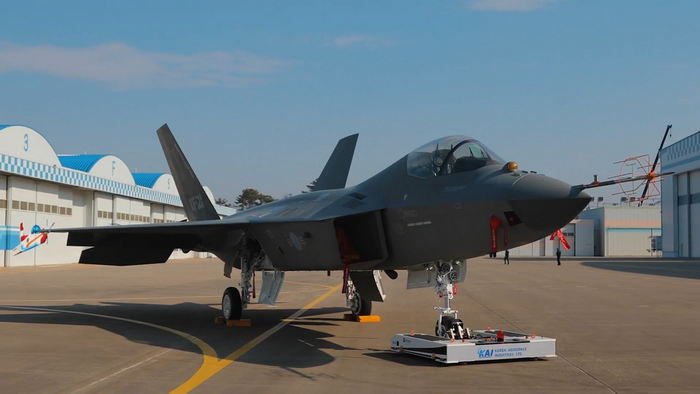
The KAI KF-21 Boramae, also known as the “Thunderhawk,” represents South Korea’s ambition to stake its claim in the elite group of countries capable of producing state-of-the-art fighter aircraft. Developed in collaboration with Indonesia and crafted by Korea Aerospace Industries, this jet is an embodiment of modern aerial combat desires coupled with advanced technology.
Promoted as a 4.5-generation fighter, the KF-21 bridges the gap between older multirole fighters and the latest fifth-generation jets. With stealth features, a modern avionics suite, and the capability to carry an array of precision-guided munitions, it showcases the potential to be the best dogfighting jet in the Asia-Pacific region.
South Korea’s venture into crafting the KF-21 underscores its determination to be more self-reliant in defense capabilities, thereby lessening its dependency on foreign-made combat aircraft. As it progresses, the KF-21 might very well challenge other contenders for the title of World’s best fighter jet in its class.
04 – Lockheed Martin F-22 Raptor: The Pinnacle of Air Dominance
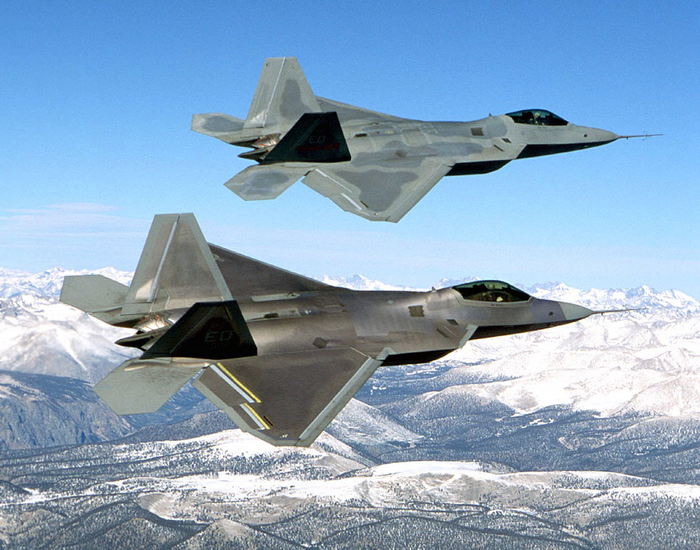
When discussing the most advanced jet fighter, the Lockheed Martin F-22 Raptor is often the first name that pops into mind. Representing American engineering and aviation prowess, this fifth-generation fighter jet stands as an unyielding beacon of air superiority. Built primarily for the U.S. Air Force, its production might have been limited, but its legacy remains unparalleled.
Its unique combination of stealth, speed, agility, and situational awareness, complemented by advanced air-to-air and air-to-ground weapons, sets it apart. Considered by many as the deadliest fighter jet, the Raptor’s capability to operate in enemy airspace ensures that adversaries think twice before challenging it. It’s more than just a fighter; it’s a testament to what modern engineering can achieve when national defense is on the line.
03 – Boeing F/A-18E/F Super Hornet: The Navy’s Stalwart Guardian
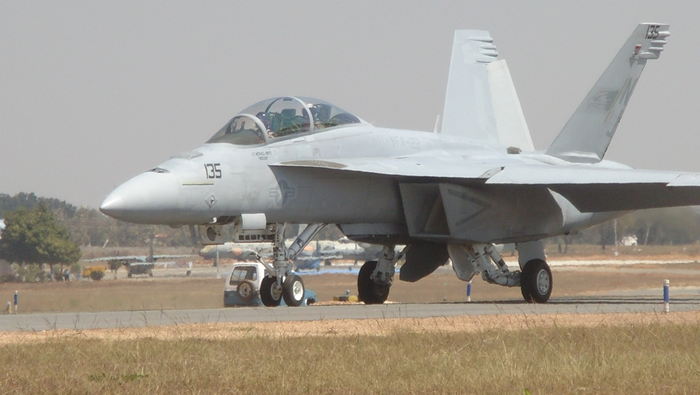
Evolving from the legendary legacy of the Hornet, the Boeing F/A-18E/F Super Hornet has cemented its position as one of the most versatile and robust fighters in the sky. Tailored specifically for the U.S. Navy’s needs, this jet symbolizes the perfect balance of attack and defense, making it one of the most dangerous fighter jets in close combat scenarios.
Capable of performing a variety of roles, from fleet defense to force projection, the Super Hornet excels in each with distinction. Its capability to launch and recover from aircraft carriers, combined with its advanced avionics and weapons systems, puts it in a class of its own. With a reputation for reliability and endurance, the Super Hornet continues to be an invaluable asset in naval operations worldwide.
02 – Dassault Rafale: Europe’s Multifaceted Jewel
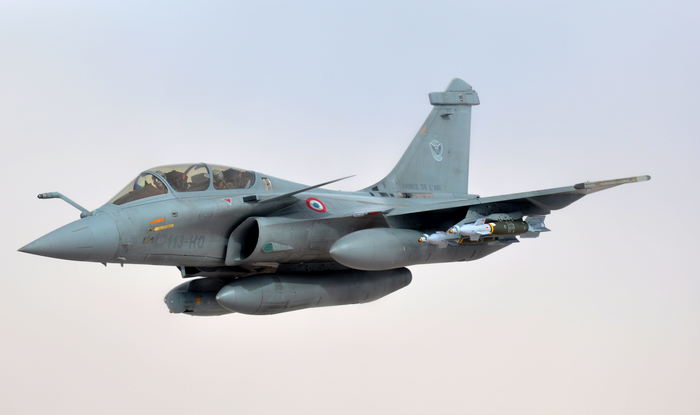
The French-made Dassault Rafale is a shining example of European defense ingenuity. As a twin-engine, canard-delta wing, multirole fighter aircraft, the Rafale is as beautiful in design as it is deadly in combat. It’s no exaggeration to label it as Europe’s most advanced jet fighter.
With an exceptional range, advanced avionics, and a wide array of weapons, the Rafale can undertake air supremacy, interdiction, ground support, in-depth strike, anti-ship strike, and nuclear deterrence missions. Its adaptability makes it one of the deadliest fighter jets, regardless of the mission. Whether patrolling European skies or deployed abroad, the Rafale stands as a testament to the heights that modern aircraft design and functionality can reach.
01 – Lockheed Martin F-35 Lightning II: The Apex of Stealth and Versatility
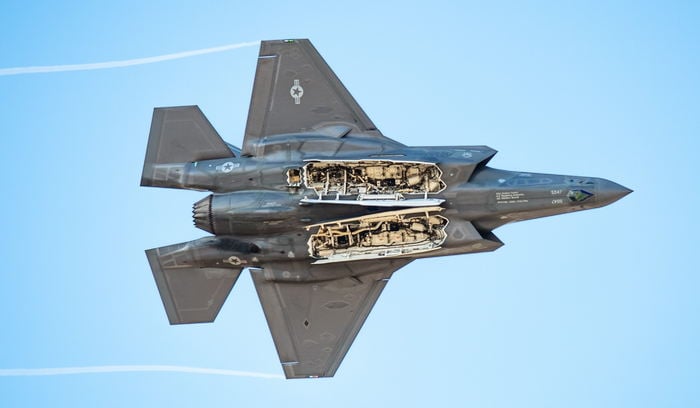
The Lockheed Martin F-35 Lightning II isn’t just another name in the aviation world; it signifies a quantum leap in the realms of combat aircraft technology and multirole functionality. As a family of single-seat, single-engine, all-weather stealth multirole fighters, the F-35 is a product of decades of research, refinement, and a burning ambition to redefine modern warfare.
What sets the F-35 apart, and perhaps makes it the crown jewel of modern fighter jets, is its unparalleled stealth capabilities. Designed to be virtually undetectable to enemy radar, it can enter hostile territory, execute its mission, and exit without ever being noticed, a quality that brands it as arguably the most dangerous fighter jet in existence.
Its avionics suite is another feather in its cap. The aircraft’s advanced sensor package is designed to gather, fuse, and distribute more information than any fighter in history, giving pilots a decisive advantage over potential adversaries. The Lightning II also boasts formidable electronic warfare capabilities, allowing it to jam or deceive enemy radar and communications.
Another standout feature is the F-35’s ability to serve three branches of the U.S. military: the Air Force, Navy, and Marine Corps. It comes in three main variants: the F-35A conventional takeoff and landing (CTOL), F-35B short takeoff and vertical landing (STOVL), and the F-35C carrier-based catapult assisted takeoff barrier arrested recovery (CATOBAR).
The Evolution of the Fighter Jet: From Props to Afterburners
The transformation of fighter jets over the decades is nothing short of remarkable. Early combat planes during WWI were propeller-driven, lacking the speed or agility of modern jets. However, with the advent of jet technology post-WWII, the world witnessed a revolution in aviation.
The Korean War saw the debut of the jet vs. jet dogfight, marking a significant shift in aerial combat tactics. As technology raced ahead, so did the capabilities of these machines. The Cold War era saw an acceleration in advancements as the U.S. Air Force and its Soviet counterpart competed for aerial dominance. This period birthed aircraft that could travel faster than the speed of sound, harnessing the power of afterburners and cutting-edge avionics.
With the turn of the century, the emphasis shifted from just speed and agility to stealth and electronic warfare. The age of fourth and fifth-generation jets like the F-22 Raptor and F-35 Lightning II, epitomized the culmination of decades of research, introducing features like radar-absorbing materials and advanced sensor suites.
Economically, while the F-35 program has faced scrutiny over its budget and development timeline, there’s no denying the aircraft’s long-term strategic value. As nations around the world line up to integrate the Lightning II into their defense arsenals, it’s clear that the F-35 isn’t just the future of the U.S. Air Force; it’s set to be the backbone of allied air forces globally.
The Cost Behind Dominating the Skies
Flying a fighter jet, unsurprisingly, doesn’t come cheap. Operating one of these state-of-the-art machines can cost tens of thousands of dollars per hour. The factors contributing to this hefty price tag include fuel consumption, maintenance, wear and tear, and the cost of munitions. For instance, aircraft like the F-35 have been reported to cost over $30,000 per flight hour.
When it comes to the pilots who master these jets, their compensation is reflective of the skill, training, and dedication required for the job. A fighter pilot in the U.S. Air Force can earn a base pay ranging from $50,000 to over $100,000 annually, depending on rank and experience. On top of this, they often receive flight pay, bonuses, and additional allowances, making it a lucrative career for those who can endure its rigorous demands.
However, beyond the dollar figures, the value of these fighter jets and their pilots is immeasurable. They’re the vanguards of the sky, ensuring peace, security, and stability in an ever-changing world.


